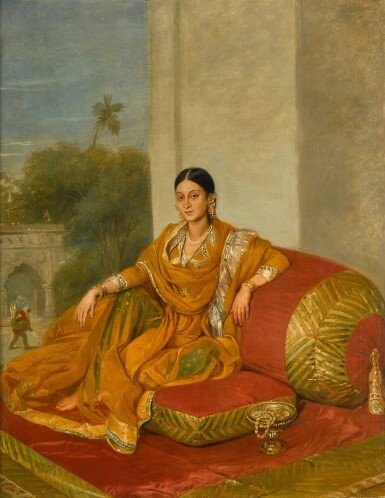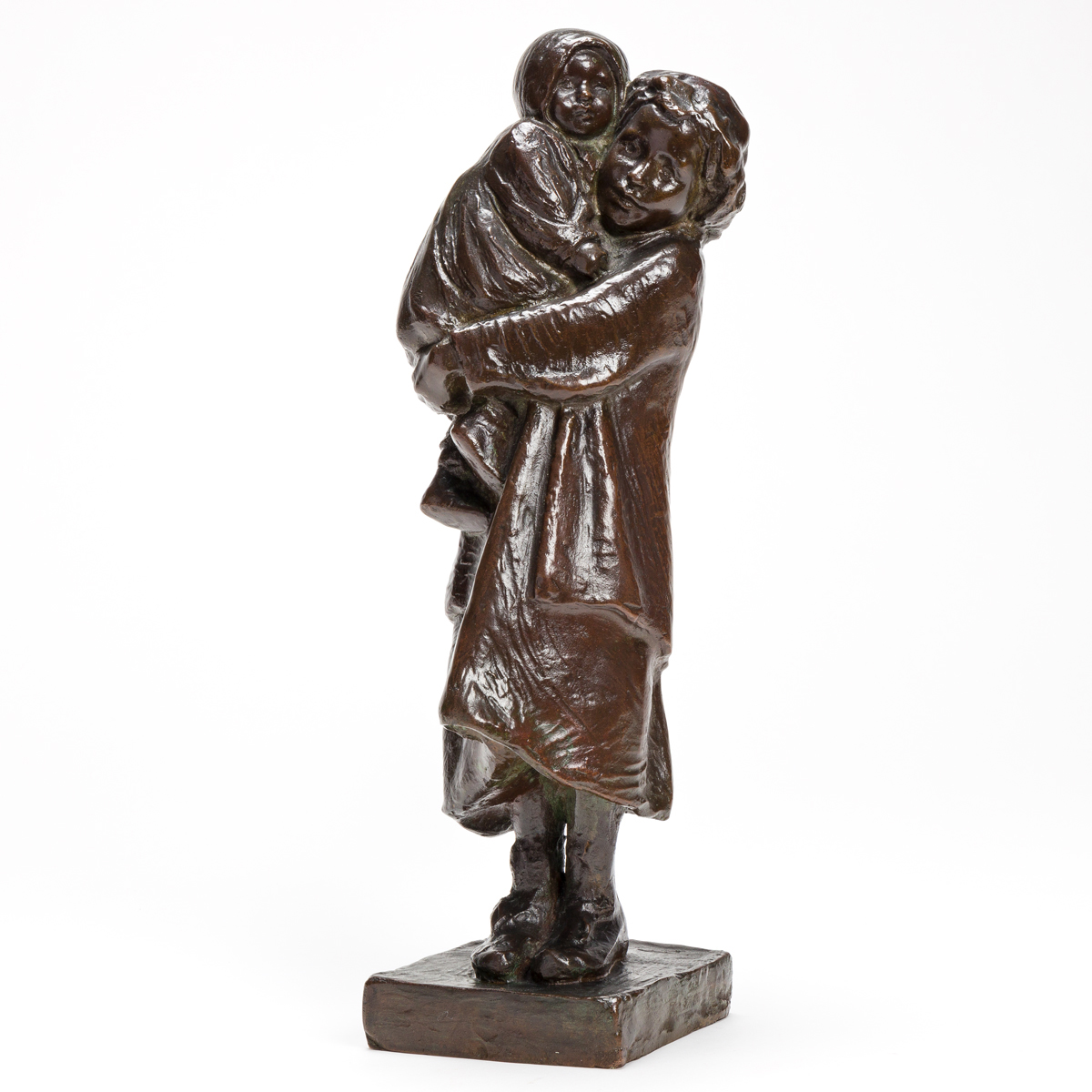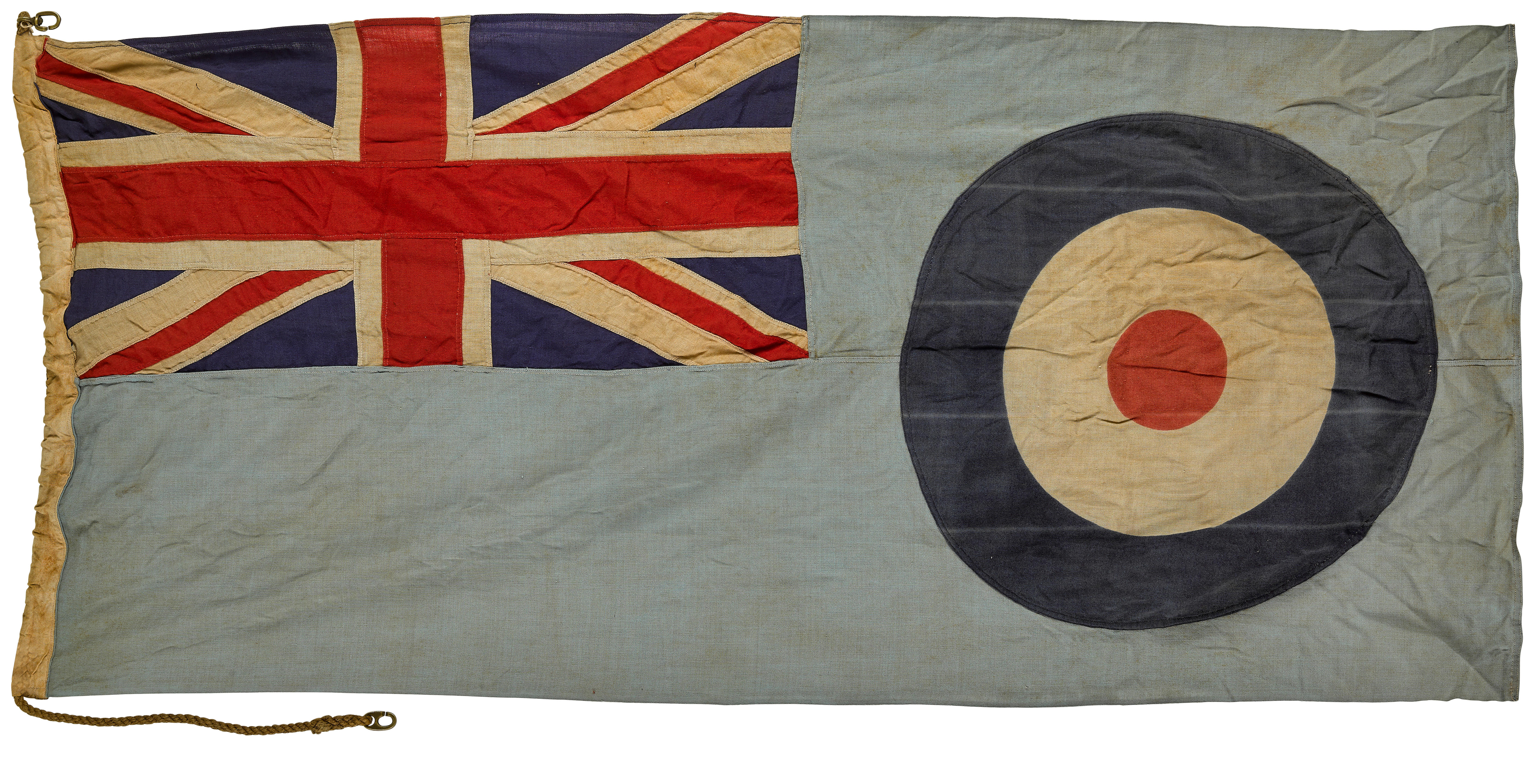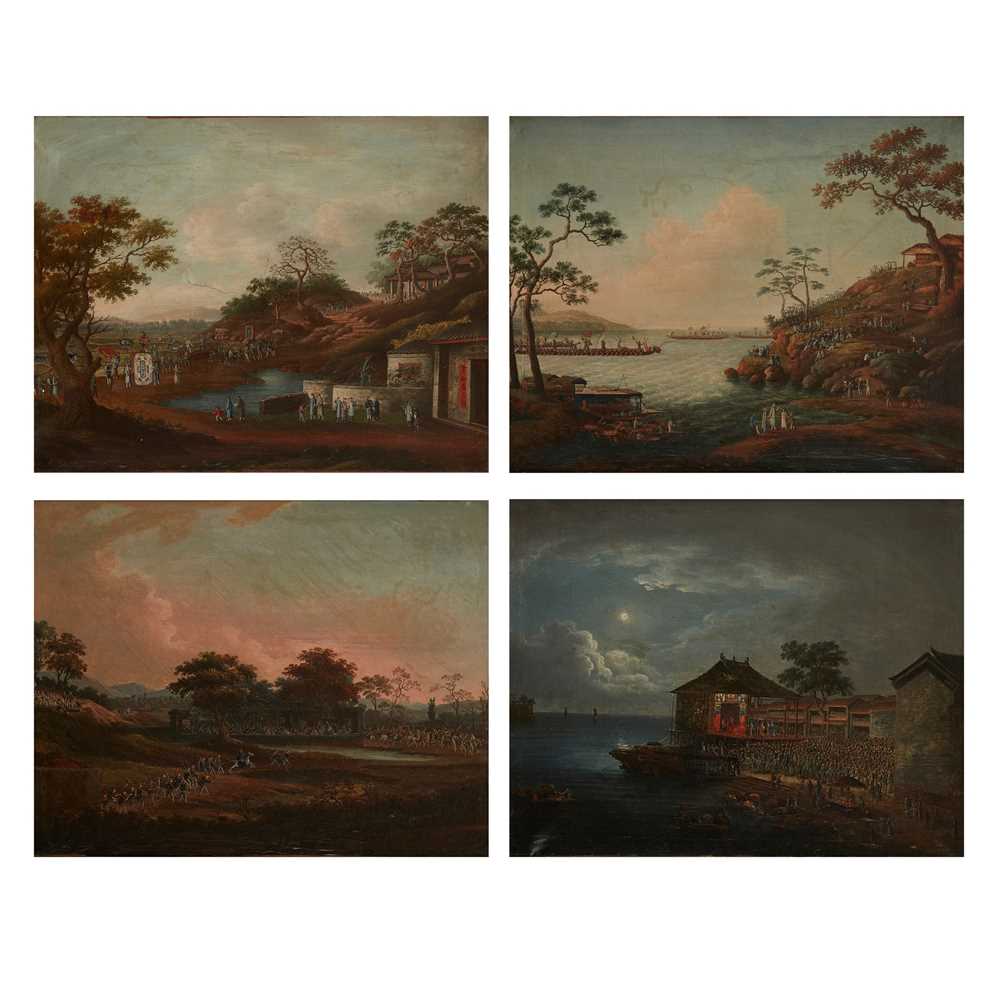AN IMPORTANT CANTON SCHOOL ‘21-LAYER’ MAGIC IVORY BALL ON A TALL STAND, QING DYNASTY Katalognummer: CA0918-015 Carved ivory with detailed openwork, reticulation and incising, partially inked. This set of carved openwork concentric ivory balls with cloud-and-dragon decoration consists of one larger set of concentric balls, a supporting plate, a stand, a smaller set of concentric balls, and a base. China Guangdong, mid- to late-Qing dynasty ca. 1840-1900 The larger set of concentric balls is carved with several entwined sinuous dragons amid clouds on the outside, revealing 20 (in words: twenty) smaller, nested openwork balls inside, each manually and differently carved, one inside the other from the largest to the smallest, ingenuously carved from one single piece of ivory. The stand shows several scenes including wandering scholars and attendants in a mountainous landscape, several pavilions, groups of weiqi players. The base shows further sinuous dragons in openwork carving. The smaller set of concentric balls is carved with floral décor on the outside and a smaller set of 7 balls hidden inside. This type of ivory balls was made in the Guangdong region during the mid- to late-Qing dynasty. The most puzzling thing about this amazing piece of craftsmanship is probably how these delicate balls were made one inside the other. This technique fascinated the Chinese as well as the Europeans in th 19th century and its earliest nickname was the “demon’s balls.” The process of making a demon’s ball usually consists of the following six stages: 1. Selection and cutting down of material 2. Using a lathe to turn the cylinder into a sphere 3. Boring holes 4. Carving inner spheres using a curved cutting tool 5. Decorative carving of outer layer 6. Decorative carving of inner layers Steps two to four consist of the intricate cutting necessary to produce nested balls. These steps require the use of a lathe. Another important trick is the drilling of evenly spaced perpendicular holes into the outer surface. In fact, this is based on an ingenious, secret geometrical concept which is believed to have been lost at some point history, making it impossible to ever reproduce these balls again. Shape: Ball on stand, which can be dismantled into 10 parts, which are being held together via original ivory screws Weight: 1119 grams Dimensions: Total height 57 cm Condition: Superb, complete and original condition with some losses to inner balls, few age cracks and some chipping to exposed areas Provenance: French private collection Literature comparison: The National Palace Museum, Taipei, recently produced an interesting video, explaining the concept and technique of ancient demon balls: http://npm.nchc.org.tw/newest_en.aspx?vid=85 清代廣州派”21層”鏤雕牙套球 廣州派(南派)象牙雕,21層鬼工球,球內套球,逐層鏤空,搭配細膩雕刻的球柱及底座,華麗典雅。 中國,廣東,清代中期至晚期,約1840年至1900年 品相完美 法國私人收藏 Schätzpreis 估價: € 1.000 Startpreis 起拍價: € 500
AN IMPORTANT CANTON SCHOOL ‘21-LAYER’ MAGIC IVORY BALL ON A TALL STAND, QING DYNASTY Katalognummer: CA0918-015 Carved ivory with detailed openwork, reticulation and incising, partially inked. This set of carved openwork concentric ivory balls with cloud-and-dragon decoration consists of one larger set of concentric balls, a supporting plate, a stand, a smaller set of concentric balls, and a base. China Guangdong, mid- to late-Qing dynasty ca. 1840-1900 The larger set of concentric balls is carved with several entwined sinuous dragons amid clouds on the outside, revealing 20 (in words: twenty) smaller, nested openwork balls inside, each manually and differently carved, one inside the other from the largest to the smallest, ingenuously carved from one single piece of ivory. The stand shows several scenes including wandering scholars and attendants in a mountainous landscape, several pavilions, groups of weiqi players. The base shows further sinuous dragons in openwork carving. The smaller set of concentric balls is carved with floral décor on the outside and a smaller set of 7 balls hidden inside. This type of ivory balls was made in the Guangdong region during the mid- to late-Qing dynasty. The most puzzling thing about this amazing piece of craftsmanship is probably how these delicate balls were made one inside the other. This technique fascinated the Chinese as well as the Europeans in th 19th century and its earliest nickname was the “demon’s balls.” The process of making a demon’s ball usually consists of the following six stages: 1. Selection and cutting down of material 2. Using a lathe to turn the cylinder into a sphere 3. Boring holes 4. Carving inner spheres using a curved cutting tool 5. Decorative carving of outer layer 6. Decorative carving of inner layers Steps two to four consist of the intricate cutting necessary to produce nested balls. These steps require the use of a lathe. Another important trick is the drilling of evenly spaced perpendicular holes into the outer surface. In fact, this is based on an ingenious, secret geometrical concept which is believed to have been lost at some point history, making it impossible to ever reproduce these balls again. Shape: Ball on stand, which can be dismantled into 10 parts, which are being held together via original ivory screws Weight: 1119 grams Dimensions: Total height 57 cm Condition: Superb, complete and original condition with some losses to inner balls, few age cracks and some chipping to exposed areas Provenance: French private collection Literature comparison: The National Palace Museum, Taipei, recently produced an interesting video, explaining the concept and technique of ancient demon balls: http://npm.nchc.org.tw/newest_en.aspx?vid=85 清代廣州派”21層”鏤雕牙套球 廣州派(南派)象牙雕,21層鬼工球,球內套球,逐層鏤空,搭配細膩雕刻的球柱及底座,華麗典雅。 中國,廣東,清代中期至晚期,約1840年至1900年 品相完美 法國私人收藏 Schätzpreis 估價: € 1.000 Startpreis 起拍價: € 500


.jpg?w=400)









Try LotSearch and its premium features for 7 days - without any costs!
Be notified automatically about new items in upcoming auctions.
Create an alert